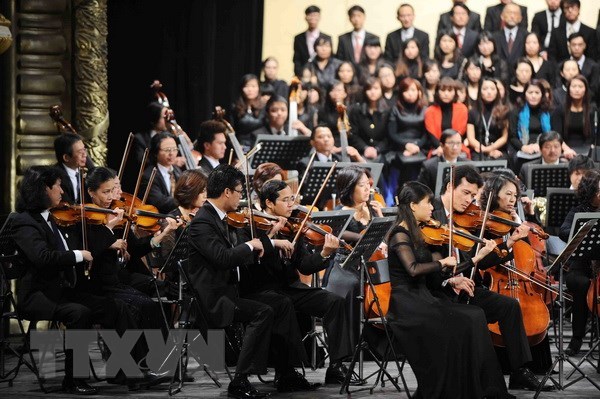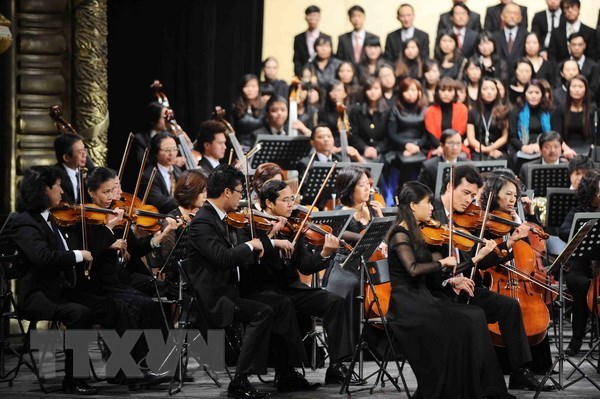
A concert entitled Autumn Melody 2018 will be held at the Hanoi Opera House on August 16 under the baton of conductor Le Phi Phi.

Illustrative photo (Photo: VNA)
The concert will provide music lovers with well-known masterpieces
of symphonic music, ballets and operas, as well as contemporary dancing and
classic Vietnamese works.
The first part of the concert will include works by Wolfgang Amadeus Mozart and
Edvard Grieg, performed by pianist Ji Sung Lee from the Republic of Korea.
The second part will feature famous opera pieces by Giuseppe Verdi, performed
by Vietnamese opera singers, such as Meritorious Artist Vanh Khuyen, Phuong Thao,
Manh Dung and Dinh Chuc, together with the Symphony Orchestra and Chorus of
Vietnam National Opera and Ballet.
Meritorious Artists Tran Ly Ly and Nguyen Hong Phong will serve as artistic
director and stage director for the concert respectively.
Since it began in 2005, the annual Autumn Melody concert has received a lot of
support and contributions from hundreds of local and foreign artists, and is
regarded as a place for Vietnamese and foreign musicians to meet and exchange
on the latest in music news, and where music lovers can enjoy a great
experience.
The biennial music show has been organised since 2013.
Source: VNA
With an increasingly vibrant and widespread emulation movement aimed at building cultured residential areas and cultured families, Yen Thuy District has been making steady progress toward improving both the material and spiritual well-being of its people, while fostering a civilized, prosperous, beautiful, and progressive community.
Once lacking recreational spaces and community facilities, Residential Group 2 in Quynh Lam Ward (Hoa Binh City) has recently received attention for the construction of a new, spacious, and fully equipped cultural house. The project followed the model of state support combined with public contributions in both labor and funding.
The "All people unite to build cultural life" movement, which has been effectively integrated with Kim Boi district’s socio-economic development goals, is fostering a lively spirit of emulation across local residential areas, hamlets, villages, public agencies, and enterprises. In addition, through the initiative, traditional cultural values are being preserved and promoted, while community solidarity and mutual support in poverty reduction and economic development are being strengthened.
A working delegation of the Hoa Binh provincial People’s Committee led by its Permanent Vice Chairman Nguyen Van Toan on June 11 inspected the progress of a project to build the Mo Muong Cultural Heritage Conservation Space linked to tourism services in Hop Phong commune, Cao Phong district.
Born and growing in the heroic land of Muong Dong, Dinh Thi Kieu Dung, a resident in Bo town of Kim Boi district, in her childhood was nurtured by the sweet lullabies of her grandmother and mother. These melodies deeply imprinted on her soul, becoming an inseparable part of her love for her ethnic group's culture. For over 20 years, this love for her hometown has driven Dung to research, collect, and pass down the cultural values of the Muong people to future generations.
In the final days of May, the Ethnic Art Troupe of Hoa Binh Province organized performances to serve the people in remote, mountainous, and particularly disadvantaged areas within the province. These were not just ordinary artistic shows, but they were the meaningful journeys aimed at spreading cultural values, enhancing the spiritual life of the people and contributing to the preservation of ethnic minority cultural identities.



